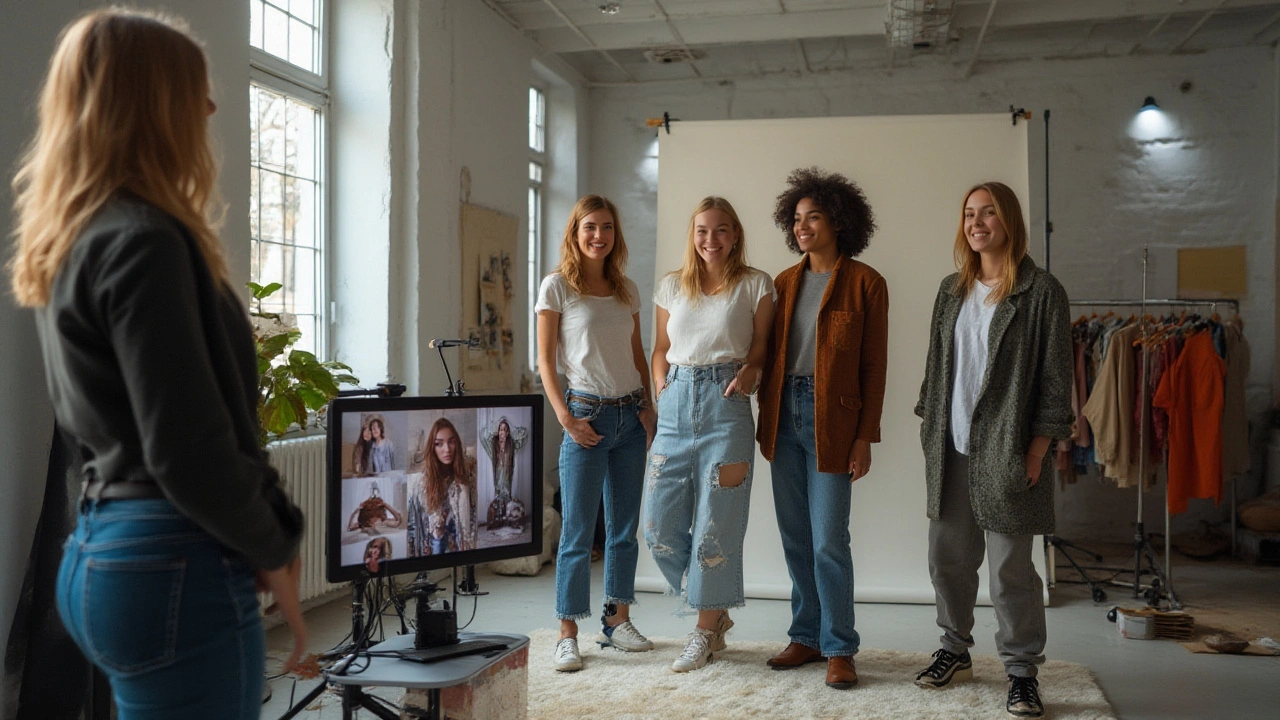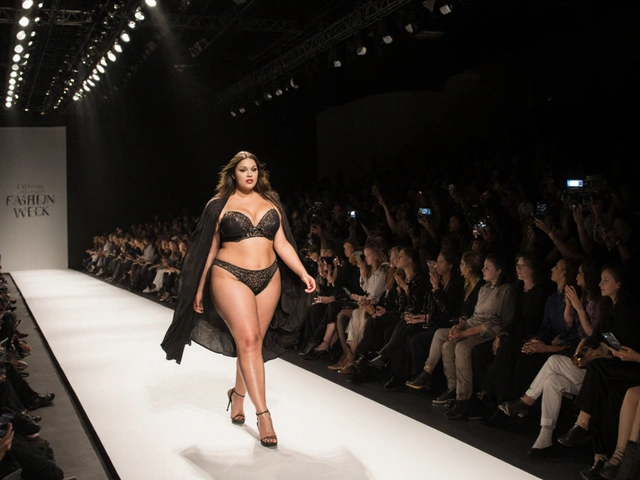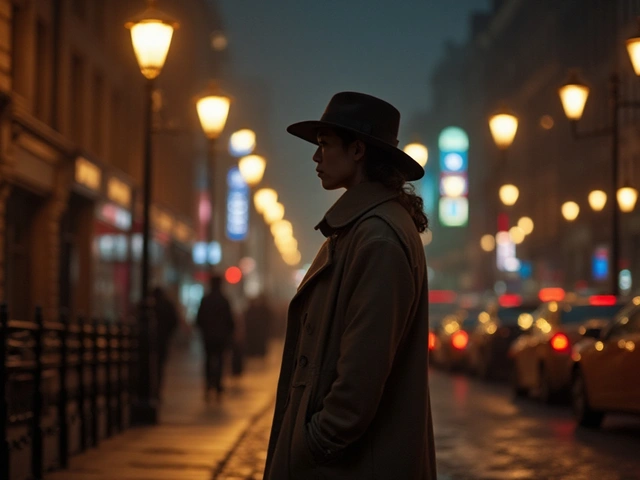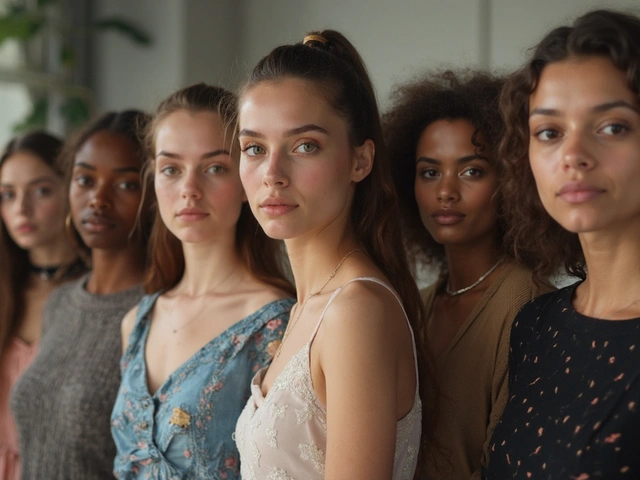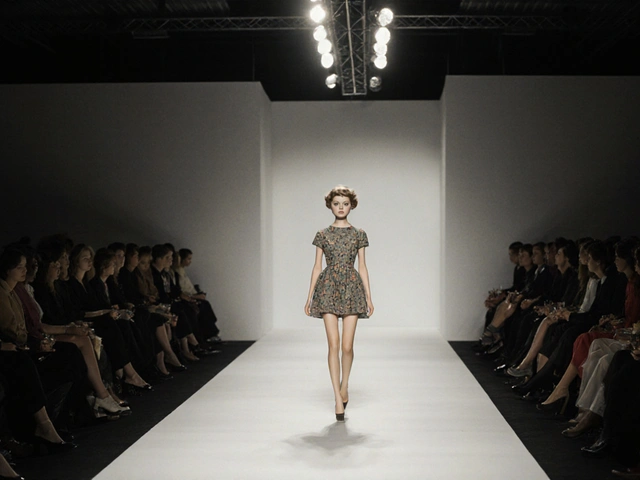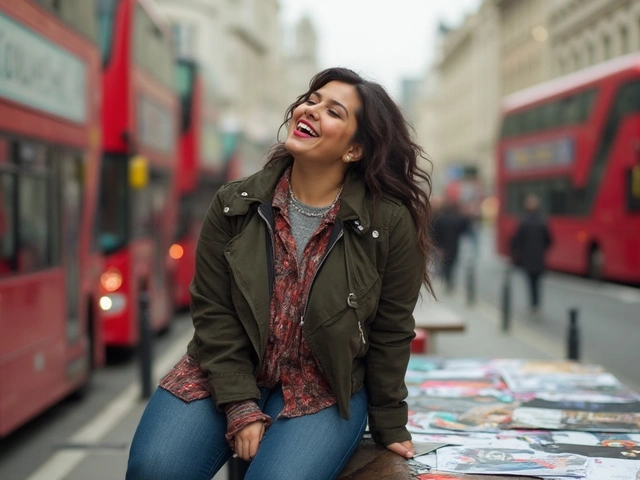Ever noticed how anyone claiming they can "make you a model overnight" usually leaves out everything about the real work behind a killer portfolio? Seriously, even the most stunning faces have to do their homework—and their portfolios are their study guides. The truth is, a model's portfolio is more than just a stack of pretty photos. It's a passport to jobs, casting calls, and the chance to stand out in a crowd that only seems to get bigger every year. Without the right pictures and strategy, even the most photogenic beauties end up overlooked. So, if you dream of making it in modeling—whether that's fashion, commercial, or even Instagram influencing—prepare to sweat the details. A portfolio isn't just something you slap together after a friend with a camera says you're "photogenic." It takes planning, vision, and yes, a fair share of boldness. Ready to roll up your sleeves and do it the smart way? Let me show you what works—and what doesn't.
Understanding What Makes a Portfolio Stand Out
Let's be honest, first impressions matter as much in modeling as anywhere else. When agents, brands, or photographers flip through your portfolio, they want to see uniqueness, skill, and real potential, not just another cookie-cutter beauty shot. Most industry insiders agree that a great portfolio tells a story—it highlights range, character, and versatility. Think about it: why do top agencies request everything from natural headshots to creative editorial looks? Because they want proof that you can handle different gigs, adapt your look, and bring something distinct to their table.
Fun fact: Surveys done by industry trade magazines in 2023 found that 86% of agents preferred portfolios that showed at least three unique styles—casual, editorial, and commercial. A single "smiling selfie" or highly filtered Instagram collage just won't cut it. The right portfolio also showcases professionalism. Crisp, well-composed images show that you respect your craft and have invested in yourself. The days of bringing in physical books to every audition may be fading, but the digital portfolio's requirements are just as strict—if not stricter.
Another big mistake? Over-editing. Agents want to see your real skin tone and features. If every image is heavily airbrushed, you risk being labeled as not authentic. And here's something tons of new models miss: agencies and brands want to see full-length shots, not just close-ups, so they can understand your proportions, pose, and posture. Mixing color and black & white images is great for variety, but keep your collection cohesive in style and mood. Consistency in image quality—and showing your best angles—will always beat having too many photos.
Want a quick breakdown? Here's what agencies look for:
- Variety: Headshots, profile shots, full-length, action, and editorial.
- Clarity: High-res images, properly exposed (avoid blurry or pixelated photos).
- Authenticity: Minimal retouching, real expression, and honest styling.
- Professionalism: A well-organized online/print presentation shows that you take your future seriously.
The bottom line is you'll never get a second chance at a first impression, so don't rush this. Your portfolio is your story—it should leave someone wanting more.
Step-by-Step Guide to Planning and Shooting Your Portfolio
Jumping straight into a studio might sound tempting, but before the flashbulbs start, you've got to plan. Start by researching the kind of modeling you want—fashion, commercial, fitness, beauty, lifestyle—and then look at what the top names in that niche are doing. Do they lean toward natural or dramatic looks? What themes or backdrops pop up repeatedly in successful portfolios?
Once you’ve got a style map, it's time to find a photographer. Not just anyone with an iPhone—look for someone who has experience shooting models and can give you direction. A good photographer helps you figure out what works best for your look and guides you through posing, lighting, and expression. Ask to see their portfolio first. Are their images crisp and engaging? Do their models look natural or stiff? If you're starting out, you can sometimes do "TFP" (time for print) shoots—meaning you and the photographer trade time for images—but don't compromise on quality.
What should you wear? Simple is key. Agencies love looks that show your natural body and features, so skip crazy prints, logos, or anything too flashy. Go with classic jeans, fitted tees, neutral dresses, and plain swimwear. For beauty shots, keep makeup minimal. Think mascara, concealer, tidy brows, and nude lips. It's all about showing the real you, not a masked, made-up version. Hair should be clean and styled simply—pulled back for some shots to show your face. And don't forget grooming! Clean nails, moisturized skin, and, if you're showing feet or hands, make sure they're camera-ready.
On shoot day, hydrate, eat something light, and practice poses in front of a mirror. If you’re unsure about looks, bring options; a stylist or makeup artist can help fine-tune. A basic shoot should include:
- Headshots (smiling, non-smiling, and profile)
- Full-length body shot (in fitted clothes or swimwear)
- Editorial/fashion shot with styling or movement
- Detail shot (hands or feet, if relevant for your niche)
During the shoot, keep energy up—even famous models like Gigi Hadid and Adut Akech swear by making playlists or cracking jokes to relax. Review images as you go. Sometimes the shot you love isn't the one that pops on screen. Take more photos than you think you need—it gives variety, and finding that magical "it" shot often takes a hundred clicks (really).

Selecting the Right Photos and Building Cohesion
This part always feels like a test, doesn't it? Out of hundreds of photos, how do you choose the few that shout "book me!" louder than all the rest? Here's the golden rule: don't let ego steer—let the experts help. If you’re working with an agency, ask their opinion. Some even sit down with you to choose which ones work best for industry clients.
A strong model portfolio should include between 8 and 15 images—enough for range but not so many that you look indecisive. Remember, less is more if each shot is powerful. Too many repetitive angles or outfits scream "filler." If you did three different shoots, it's perfectly fine to include two images from each, as long as every photo offers something unique. Diversity is key: casting agents want to see if you can nail a commercial smile, then switch to high fashion edge in a blink. Occasionally, a black-and-white shot, or something outdoors or in moody lighting, brings your "look" to life in ways that studio shots just can’t.
While it’s tempting to pick the photos you like best, trust second opinions. Ask a seasoned model friend, a photographer, or agency scout for honest feedback. Photos that land jobs aren't always the ones you feel most excited about (I once hated my favorite editorial shot until an agency told me to use it—best booking move I made that year). Also, never forget to update your portfolio as you grow. A photo from last year where you look different, have a new hairstyle, or changed your physique should be swapped out for current ones.
Here’s a quick data-driven tip. According to a poll by The Model Alliance in 2024, portfolios with at least three diverse settings (studio, outdoor, and lifestyle/candid) scored 24% higher callback rates from agencies. Break up solid-colored backdrops with a street look or natural window light. This always helps you look versatile and adaptable. Display the images in a way that tells a story—start strong with a striking headshot, swoop into action and editorial poses, and close with a lifestyle or quirky image if it feels right.
If you’re going digital (highly recommended), keep file sizes web-friendly yet sharp—usually 2048 pixels on the long side. Organize your online gallery for easy viewing. Don't forget to add brief captions: "Headshot by [Photographer], Editorial by [Photographer]," etc. It shows you’re professional and gives photographers credit.
How to Present and Share Your Portfolio for Maximum Impact
Casting directors have short attention spans. They're often flipping through dozens of portfolios every morning. How do you make them pause on yours? Presentation is everything. Digital portfolios are the go-to now—think clean, mobile-friendly galleries. Don’t overload your homepage with too much info; keep the focus on your images, with your stats (age, height, measurements, contact) in a dedicated sidebar or a "Profile" section. Avoid flashy animations or crowded backgrounds that distract from your photos.
If you’re serious, use platforms like ModelMayhem or The Hub, but don’t underestimate the power of your own website. It’s a chance to control your brand. Make sure links to socials are there, but only if your profiles are curated and professional. For Instagram, keep a story highlight with portfolio shots, but save your best images for the web page itself.
If you’re still working with a hard copy, invest in a professional-quality book. Agencies want A4 size, sturdy paper, and pages that lay flat (readable at castings, not creased or sticky with fingerprints). Never show up with a ring binder or a dog-eared printout—small touches matter more than you think.
Be ready to email or message your portfolio instantly—most jobs come up last minute and first-come, first-booked is sometimes the rule. Save a small, compressed PDF version you can send quickly, and a link to your full online gallery for more in-depth viewing.
Keep all contact info current. It’s crushing to lose a job because someone couldn’t reach you in time. For email signatures or DMs, always include the link to your online portfolio and specify your agency or “freelance.” If you’re repped, let the agency handle bookings, but if not, be clear and direct about your availability and rates.
Nothing beats a face-to-face meeting, though. If you land an in-person casting, bring your book, be early, dress smartly (no wild prints), and go in with confidence. The way you present your book—open, organized, and with enthusiasm—really does sway decision-makers.
| Must-Have Shots in a Model Portfolio | Recommended Outfits | Setting/Backdrop |
|---|---|---|
| Natural headshot | Fitted t-shirt, clean jeans | Studio, plain wall |
| Full-body shot | Plain swimsuit, simple heels | Bright, uncluttered space |
| Editorial/action | Statement piece, accessories | Outdoor, styled set |
| Lifestyle/candid | Casual daywear | Street, home, or park |
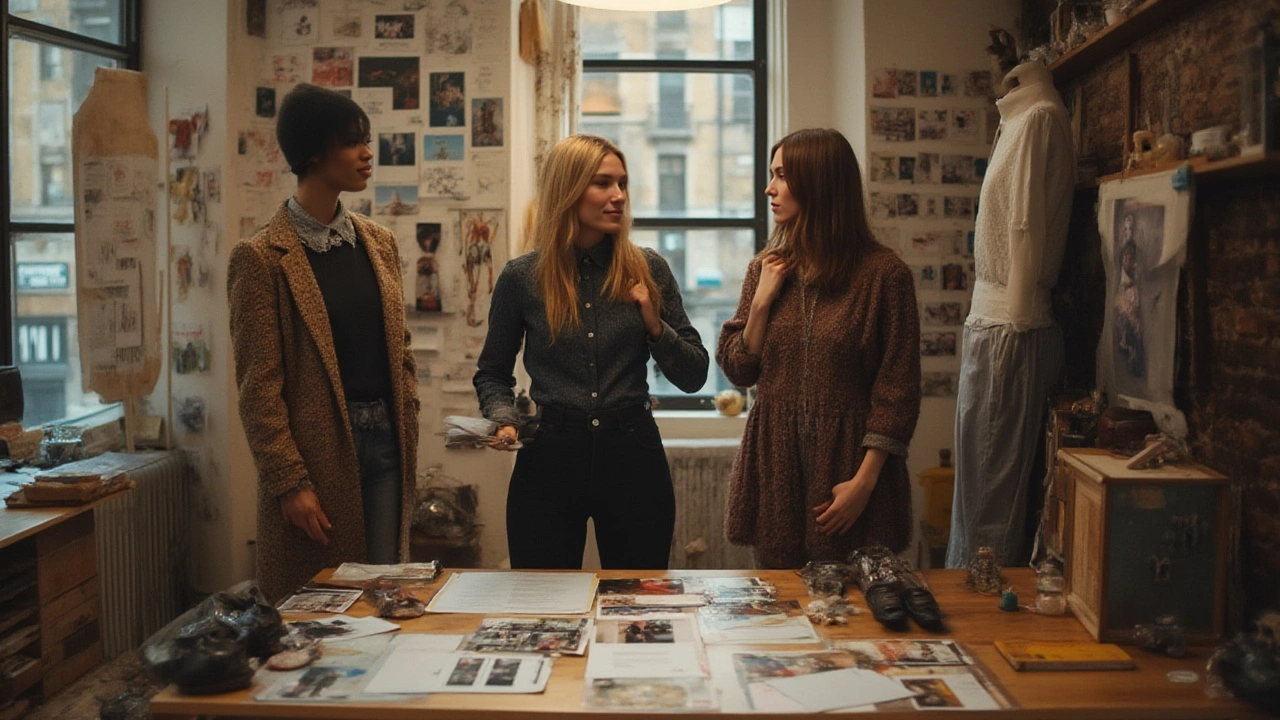
Keeping Your Portfolio Up-To-Date and Next Steps
Imagine this: you snag a killer campaign, cut your hair, or land a TV spot—yet your portfolio still screams last season. A static portfolio is a career-killer. As you grow, update your portfolio with every major change. Did you switch styles, experiment with new concepts, or enter a new market (think plus-size, senior, or gender-fluid modeling)? Adapt your collection. Numbers from Vogue’s 2024 Talent Insights report show models with regularly refreshed portfolios doubled their booking rates compared to those who used the same shots for over a year.
Don’t stash old images if they’re iconic or you still land castings with them. But always prioritize recent looks and skills. If you master a new pose, expression, or even acting skill, weave it in. The modeling world moves fast—new trends, makeup, and looks become hot almost overnight. Keep researching what’s “in” and make small tweaks to align with agency needs. This doesn’t mean chasing every fad, but if natural, stripped-down portraiture is in this season, then feature it.
Here’s a secret most beginner models miss: always save original photo files and keep backups of your retouched images. There’s nothing worse than scrambling for high-res copies when a big brand requests them. Use cloud storage or an external drive for safekeeping, and organize images by year and shoot. If you work internationally, ensure your portfolio is easily accessible from anywhere. And don’t forget model release forms—these protect both you and your photographers when your work appears in campaigns, editorials, or social posts.
Networking is also tied to keeping your portfolio fresh. When Bronwen, my own creative kid, first got curious about modeling, I taught her to send updates not just to agents but to her favorite photographers and stylists, too. Every new collaboration opens doors, brings feedback, and keeps you on industry radar. And if you break into a new niche—say, fitness or swimwear—do a shoot specifically for that vibe, and pitch yourself to agencies that specialize there.
Keep learning. Industry workshops, posing masterclasses, and social media platforms like TikTok and Instagram are epic for seeing what’s working—and snagging inspiration. The point? Don’t let your portfolio gather dust. Let it evolve with you. If you treat it as a living, breathing snapshot of your career, you’ll always have a reason for people to keep turning those pages—or swiping through your gallery.
